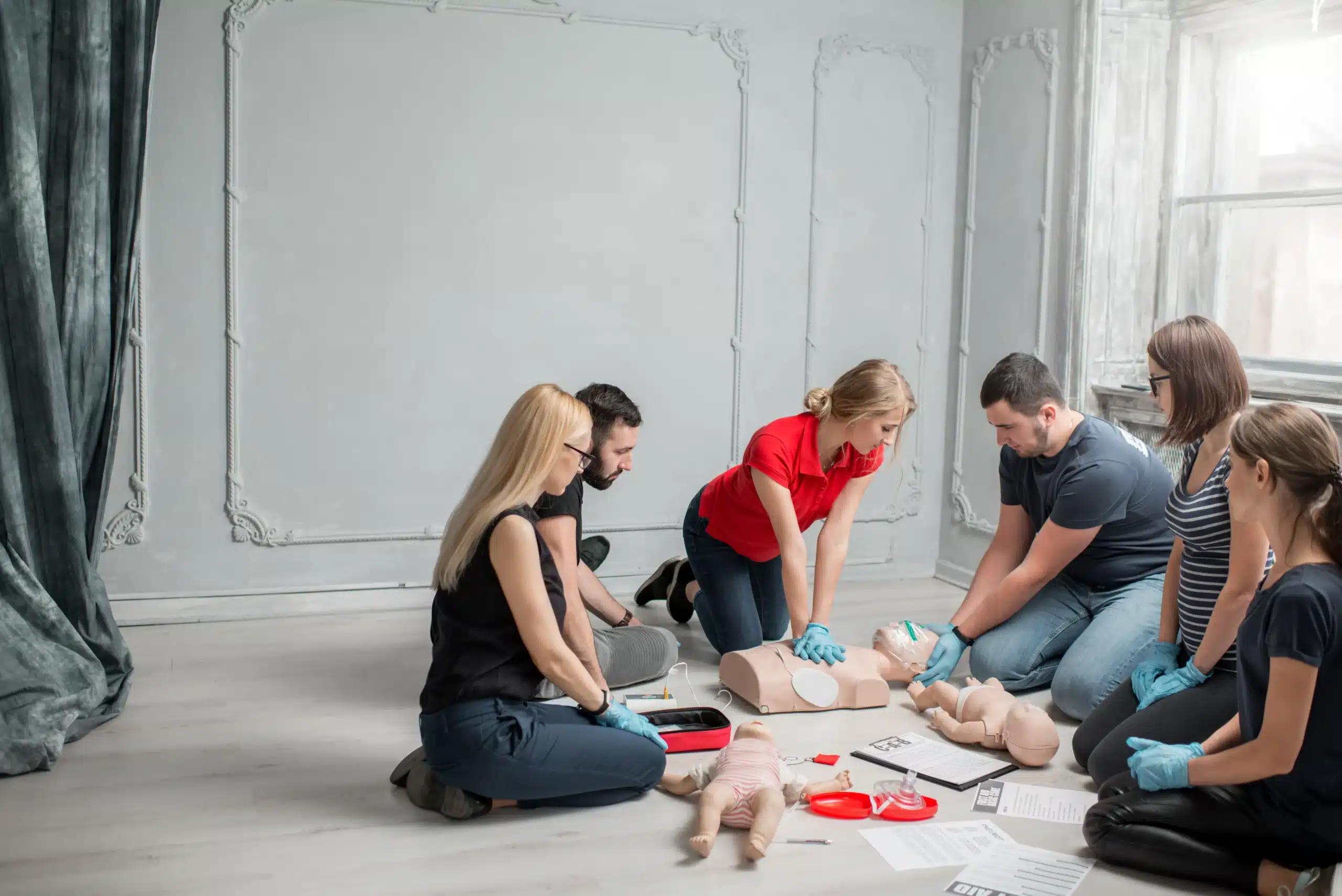Saving Lives One Compression at a Time
Cardiopulmonary resuscitation (CPR) is one of the few medical interventions that can mean the difference between life and death in a matter of seconds. Every year, hundreds of thousands of cardiac arrests occur in homes, workplaces, and public spaces—not to mention hospitals. What happens in the moments immediately following these emergencies often determines survival.
That’s why CPR is an essential skill. Not only for healthcare professionals but for everyday people. From maintaining blood flow to protecting the brain, CPR serves as a critical lifeline until advanced medical help can step in. And the good news? Equipped with CPR knowledge, anyone can make a difference.
This blog demystifies CPR’s role in healthcare, dives into its history, highlights its life-saving impact, and shows you how to get CPR-certified.
What Is CPR and Its Role in Healthcare?
CPR stands for cardiopulmonary resuscitation, a life-saving technique designed to restore oxygen-rich blood flow to the brain and vital organs when the heart or lungs stop functioning.
How Does CPR Work?
At its core, CPR involves two key actions:
- Chest Compressions: Pressing firmly and rhythmically on the chest to manually pump oxygenated blood to the brain and heart.
- Rescue Breaths (optional for non-healthcare providers): Delivering breaths into the patient’s lungs to ensure oxygen enters the bloodstream.
The overarching goal of CPR is to act as a stopgap measure—keeping the body alive and preventing brain death—until paramedics or medical professionals arrive.
Universal Applicability
CPR isn’t limited to hospitals. It can save lives in any setting, such as schools, shopping malls, gyms, and even your own living room. This universality makes CPR one of the most versatile and impactful techniques in healthcare.
A Brief History of CPR
Milestones in the Evolution of CPR
Believe it or not, CPR dates back centuries in concept but took its modern form through decades of scientific discovery. Key milestones include:
- 1740s: Early attempts at “mouth-to-mouth” resuscitation began in drowned patients.
- 1956: Mouth-to-mouth resuscitation as we know it was developed by Peter Safar and James Elam.
- 1960: The American Heart Association (AHA) introduced CPR training to medical professionals and then the public.
- 2010: Hands-only CPR gained prominence, cutting out rescue breaths for untrained bystanders.
Pioneering Techniques Based on Research
Advancements in CPR protocols over time have relied heavily on evidence-based medicine. For example, the realization that high-quality chest compressions (proper depth and speed) drastically improve survival rates has reshaped training guidelines.
Importance of CPR in Saving Lives
The Numbers Speak Volumes
- Over 350,000 out-of-hospital cardiac arrests (OHCA) occur every year in the United States.
- Survival drops by up to 10% every minute CPR isn’t performed.
- Bystander CPR doubles or triples survival chances, according to the AHA.
These numbers show just how urgent CPR performance is in emergencies.
The Chain of Survival
CPR plays a pivotal role in the AHA’s “Chain of Survival,” which outlines the steps necessary to improve cardiac arrest outcomes:
- Early recognition and access to emergency care.
- Immediate CPR to maintain circulation.
- Rapid defibrillation with an AED if available.
- Advanced medical care from emergency services.
- Post-cardiac arrest care in the hospital.
The Role of Healthcare Professionals in CPR
First Responders to Emergencies
Healthcare professionals such as paramedics, nurses, and physicians are typically the first line of defense during cardiac or respiratory emergencies. Proficiency in CPR enables them to stabilize patients en route to advanced treatment.
Continuous Training Is Critical
Even seasoned professionals need regular CPR certification renewals to stay sharp. Modern training focuses on updates to techniques, such as better compression-decompression mechanics and integrating technology like automated defibrillators. With lives at stake, precision matters.
Beyond the ER
It’s not only emergency workers—CPR skills are vital for hospital administrative staff, workplace first aiders, and school healthcare teams. The broader the knowledge base, the safer the community.
How to Get CPR Training and Certification
Steps to Becoming Certified
- Find a Training Provider: Look for courses offered by organizations like the American Heart Association or Safety Training Seminars.
- Choose the Right Certification:
- BLS (Basic Life Support) for healthcare professionals.
- CPR & First Aid for the general public.
- PALS and ACLS for advanced life-saving measures.
- Complete the Training (typically 2-4 hours).
- Pass the Skills Exam and receive your official certification.
General Public vs. Professionals
The beauty of CPR certification is its accessibility. Whether you’re a parent seeking basic skills or a doctor needing advanced life support expertise, there’s a course for every level. It’s never too late to learn!
Debunking Myths About CPR
Certain beliefs surrounding CPR may discourage people from seeking training or acting in an emergency. Let’s correct some common misconceptions by presenting the facts:
Myth 1: “CPR Is Only for Professionals”
Wrong. Bystander CPR is one of the most significant factors in cardiac arrest survival rates. You don’t have to be perfect—doing something is always better than doing nothing.
Myth 2: “CPR Will Always Save a Life”
While CPR dramatically improves a victim’s odds of survival, it’s not guaranteed. However, performing CPR until advanced care arrives can mean the difference between life and irreversible damage.
Myth 3: “I’ll Harm the Patient”
It’s a common fear, but remember this—someone in cardiac arrest is already in a life-threatening condition. Broken ribs are far less concerning than the alternative.
Empower Yourself with CPR Knowledge
Cardiac and respiratory emergencies happen when we least expect them. Whether you’re a seasoned healthcare professional or an everyday citizen, learning CPR is one of the most empowering skills you can acquire. You can be the difference in those critical moments of life and death.
If you haven’t already, consider signing up for CPR certification today. Contact us at Safety Training Seminars about the courses we offer, tailored to your needs—from basic bystander skills to advanced certifications.
Take action today. The life you save tomorrow may be someone you love.








